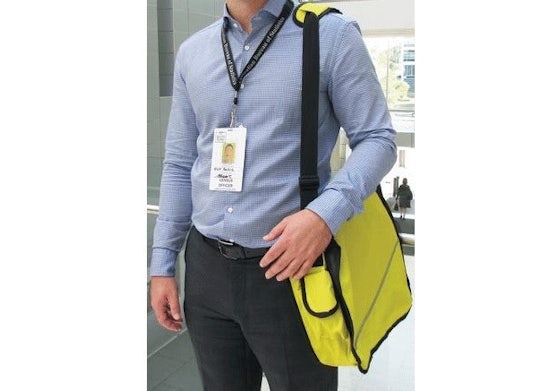Help shape Australia’s future
As Australia gears up for the 2016 Census next week, Lisa Moutzouris, South Australia Census Director stresses the importance of older people participating. “Census data is used by government and providers to help ensure there are appropriate health services, public transport, housing and aged care facilities – not just now, but for years into the future.”

She highlights how demographics, and hence services, have changed in the past few years. “From 2001 to 2011, South Australia has seen the number of older people increase by 46,000 people. 16 per cent of the population in South Australia is now aged 65 and over,” she says.
While millions of letters with unique logon codes and online instructions have been sent out by post Ms Moutzouris says Census field workers have been liaising with aged care facility managers to distribute material to residents and field workers will collect the completed forms. “How they manage it is up to the individual facility – managers may ask a family member to help complete the form or admin may complete as much as they are able to,” she says.
Field workers will also visit retirement and independent-living villages with a form and a unique code, giving residents the option of either filling the form in and sending it back, or completing the form online.
ABS staff will wear visible identification at all times when undertaking Census work. Census Field Officers and Area Supervisors will wear photographic identification, although some Census field staff will wear identification without photo. Census Field Officers will also be wearing a bright yellow satchel. In most cases, they will be using electronic hand-held devices, such as tablets or smartphones.
For older people who are living independently who may need assistance, Ms Moutzouris suggests asking trusted a family member, friend or carer to help them.
Help sheets have been produced to support people with different needs:
Click here to download a fact sheet for people who are deaf or hard of hearing.
Click here to download a fact sheet for people who are blind or have low vision.
Click here to download a brochure for people with an illness, injury or disability.
If you receive a unique number but would prefer to use a paper form, call 1300 820 275. You will need your Census letter and the 12-digit Login number printed in the middle of the letter.
Ms Moutzouris also stresses all information is kept confidential and the ABS is using strong encryption technologies to ensure data is kept securely.
While completing the Census is compulsory, Ms Moutzouris highlights it’s not essential to complete it on the night. If people lose the letter or forget to fill it in, reminder letters and field officers will visit your address. “There is a relatively long window before field officers will be contacting people to remind them to complete their Census,” she says.
With the digital-first approach, more than 65 per cent of households, or 15 million people, are expected to complete the Census online. The approach will save Australian taxpayers more than $100 million and 327,000kg in paper.
For more information visit www.census.abs.gov.au or call 1300 214 531.
Quick facts about older Australians from the 2011 Census
- There were 3 million people aged 65 years and older in Australia, 1.4 million men, and 1.6 million women. Over half of this population were aged 65 – 74 years, 58 per cent of the men and 51 per cent of the women aged 65 years and over.
- In 1901 the proportion of Australia’s population aged 65 years and over was 4 per cent; in 2011 this had increased to 14 per cent, and the number of people aged over 85 years has tripled.
- 36 per cent of Australia's older people were not born in Australia, a substantially higher proportion than the 24 per cent of people under 65 years who were overseas-born.
- More than half (61 per cent) of Australia's older people in 2011 had completed at least Year 10 or equivalent in schooling; just over a quarter (28 per cent) had achieved Year 12 or equivalent.
- South Australia and Tasmania had the largest proportions of older people (16 per cent), followed by New South Wales and Victoria (both 14 per cent), Queensland (13 per cent), Western Australia (12 per cent) and the ACT (10 per cent).
- 69 per cent of older Australians lived in Major Urban areas. Almost a quarter of older people lived in Other Urban areas such as smaller cities and towns.
- Most people aged 65 years and over lived in private dwellings (94 per cent). Of the 180,300 older people who lived in non-private dwellings, the great majority were in some type of cared accommodation – the leading two types were nursing homes (67 per cent) and accommodation for the retired or aged (not self-contained) (25 per cent).
- 211,000 men aged 65 years and over were employed. 26 per cent were Managers. Common occupations included Livestock Farmers, Accountants, Electrician, Truck Driver and Commercial Cleaners.
- 116,000 women aged 65 years and over were employed. 28 per cent were Clerical and Administrative Workers. Common occupations included Registered Nurses, Livestock Farmers, Aged and Disabled Carers, Commercial Cleaners and General Sales Assistants.
- 12 per cent of older persons cared for children who were not their own.











![The new Aged Care Act exposure draft is slated for release in December of 2023, but advocates hope to see it rolled out on January 1, 2024. [Source: Shutterstock]](https://agedcareguide-assets.imgix.net/news/articles/wp/agedcareact__0811.jpg?fm=pjpg&w=520&format=auto&q=65)












Comments